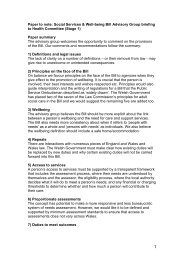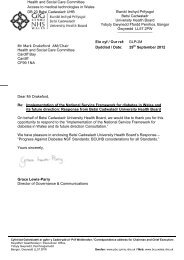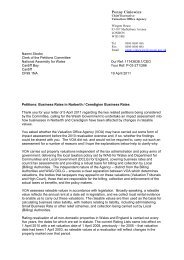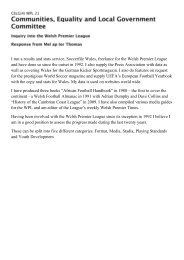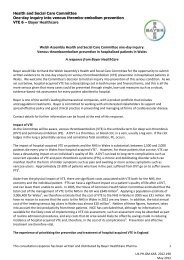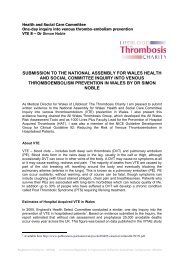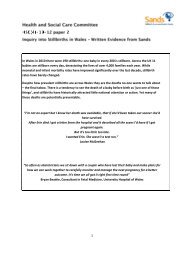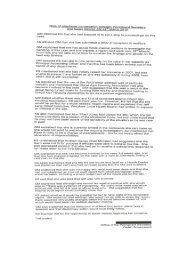Consultation Response - Media 12 - Cardiff University PDF 2 MB
Consultation Response - Media 12 - Cardiff University PDF 2 MB
Consultation Response - Media 12 - Cardiff University PDF 2 MB
Create successful ePaper yourself
Turn your PDF publications into a flip-book with our unique Google optimized e-Paper software.
BBC Radio 37.1 37.4 +0.3<br />
BBC Online 11.2 <strong>12</strong>.2 +1.0<br />
Total 100<br />
(N=4,687)<br />
100<br />
(N=5,177)<br />
Although the inclusion of 5 live Breakfast added a new programme to the<br />
sample, Table 2.1 above shows that this did not alter the balance of coverage<br />
on the different outlets. We isolated the 5 live data to see if they exerted a<br />
disproportionate influence on the results for BBC Radio across various<br />
measures used in Sections 2, 3 and 4, and found that there was no significant<br />
change where it was removed. For example, of the total number of items in<br />
which devolution was the main subject on BBC Radio (dealt with in Table<br />
2.5), the removal of 5 live data from the analysis alters the final result by just<br />
0.1%, and less than that for the BBC as a whole.<br />
News relevant to devolution (news items that involved topics or issues where<br />
responsibility has been devolved) accounted for 9.8% of the total sample<br />
(505 out of 5,177 news items). This proportion was higher on BBC outlets,<br />
where 11.3% (445 out of 3,953) of news items were relevant to devolution.<br />
This represents a modest increase when compared to 2007, when 8.7% of<br />
BBC news items were relevant to devolution (or 7.7% across the whole<br />
sample). We examine these items in more detail in Section 3. In this section,<br />
we identify how – and how often – each nation appears in the news overall.<br />
We began by establishing which nation a news item related to (or was about)<br />
within the UK, regardless of whether it concerned devolved issues. So, for<br />
example, a crime story in Manchester was classified as relating to (or about)<br />
England, while a story about flooding in Pembrokeshire was seen as relating<br />
to (or about) Wales. If we exclude international news or news items about<br />
the UK as a whole, the 2007 study found that news items related to Scotland,<br />
Wales and Northern Ireland accounted for 11.5% of coverage between them.<br />
As we noted in the 2007 report, there are no precise benchmarks with which<br />
to evaluate the spread of stories across the UK. The concept of news value is<br />
unhelpful, because it is vaguely defined, imprecise and contested (thus any<br />
objective measure of the number of newsworthy events that occur in specific<br />
locations is impossible). However, our 2007 report did note that the coverage<br />
of Scotland, Wales and Northern Ireland on news outlets did not reflect the<br />
population of the UK or the distribution of the audience. This is not to say<br />
that population should determine the volume of coverage, simply that in 2007<br />
England was given significantly more coverage than might be explained by<br />
the distribution of the UK-wide audience.<br />
Table 2.2 below suggests that while England remains the dominant source of<br />
news items, the distribution has shifted, with the proportion of news items<br />
related to the other three nations increasing (especially in relation to<br />
Scotland) from 11.5% in 2007 to 18% in 2009 and the proportion of news<br />
items relating to England decreasing. Again, while we cannot assume a<br />
8



